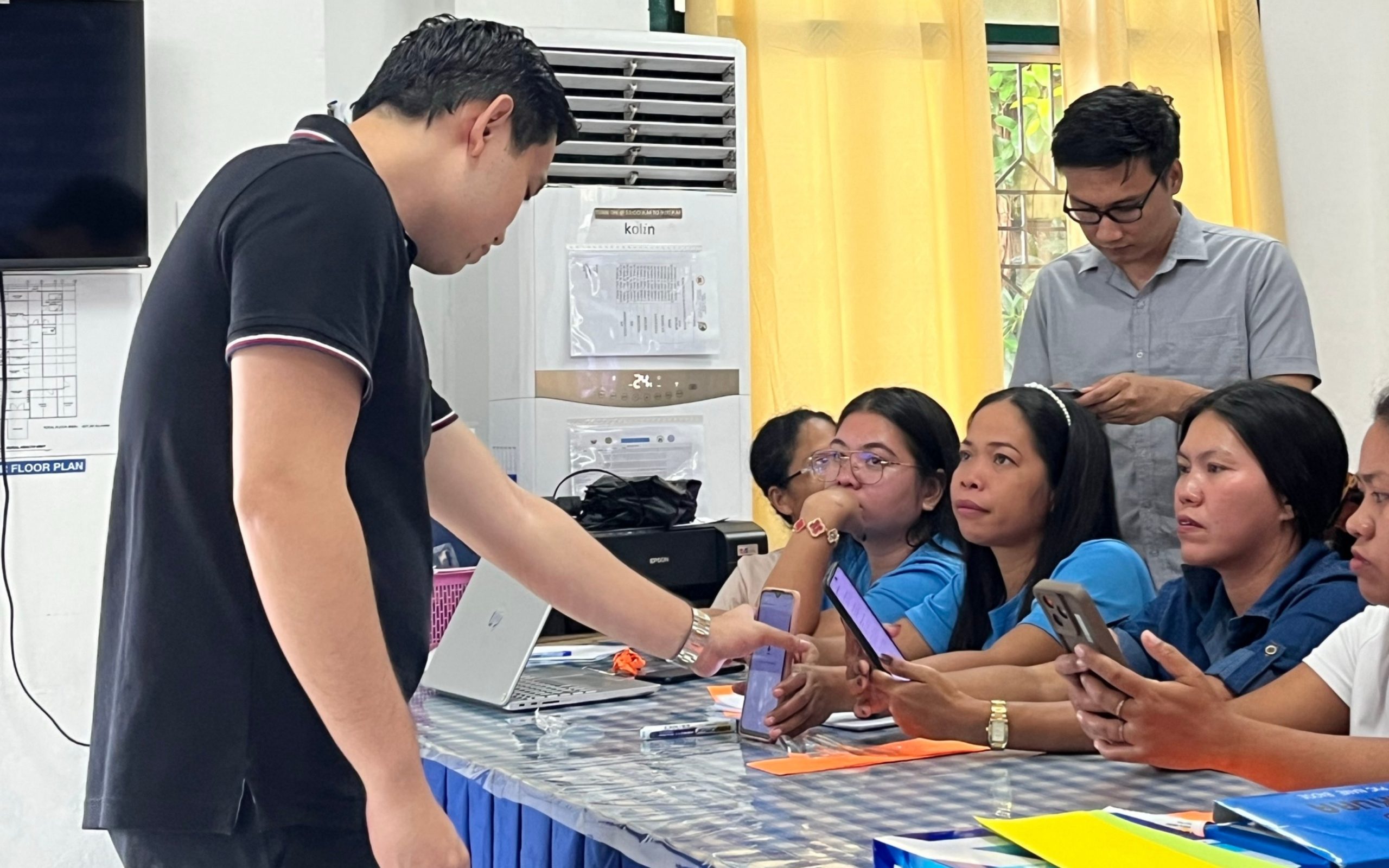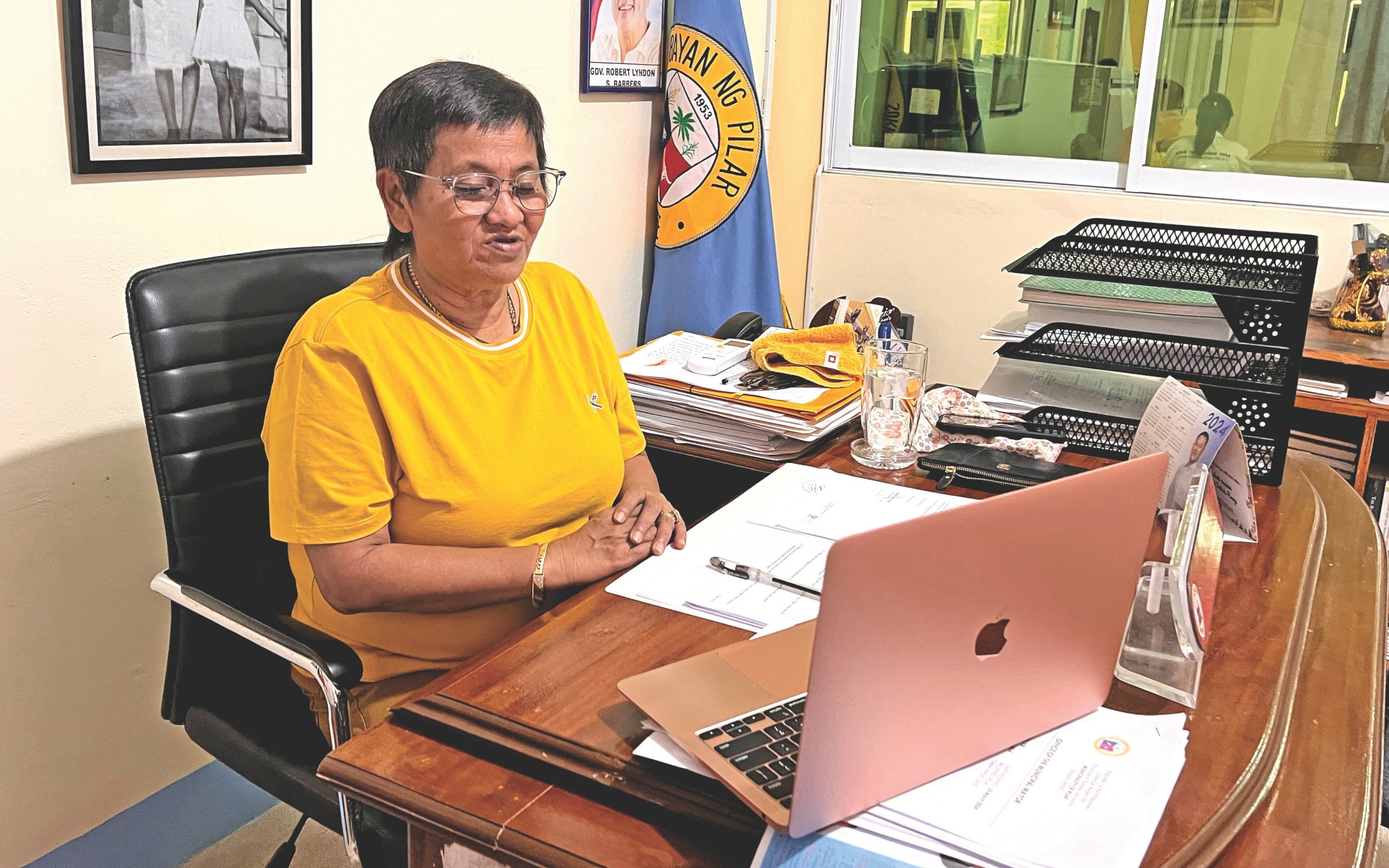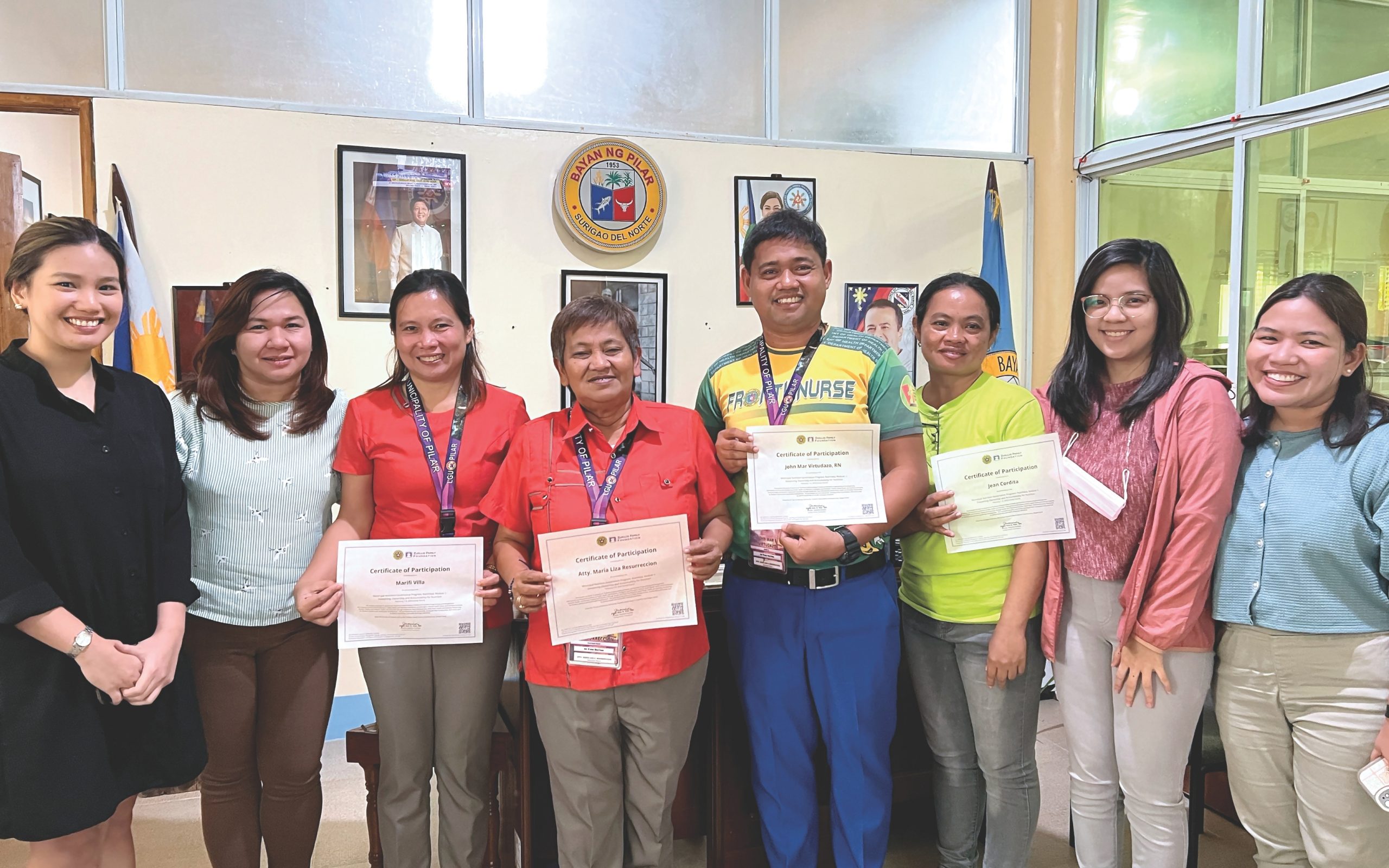Empowering Barangays and Communities through Nutrition Governance: Pilar’s Journey
Stories

Before becoming a municipality in 1953, Pilar was a barrio (village) of Dapa in Siargao Island. Today, it has 15 barangays with a population of nearly 11,000 as of 2023. Farming, mainly copra and rice, remains the primary livelihood in Pilar and its neighboring towns.
As a fifth-class municipality, Pilar has received support from various organizations, including the Zuellig Family Foundation (ZFF). Mayor Liza Resurreccion first joined ZFF and the Department of Health’s (DOH) Municipal Leadership and Governance Program (MLGP) in 2016-2017, which helped her understand the deeper connections between health and social factors. While she initially focused on improving healthcare in general, she later realized that nutrition needed special attention.
Pilar was later included in ZFF’s Municipal Nutrition and Governance Program (MNGP)-Nutrition and Health Leadership (NutriHeaL) under the Ahon Siargao initiative. This support came at the right time, as the municipality faced worsening nutrition challenges, especially after Typhoon Odette.
“My involvement in ZFF’s program changed how I saw healthcare in Pilar,” said Mayor Liza. “But I soon realized that nutrition, particularly among children, was another urgent issue that needed action.”

Understanding the Problem
Marifi Villa from the Municipal Social Welfare and Development Office (MSWDO) explained that malnutrition in Pilar stems from poverty, food insecurity, unemployment, and lack of nutrition knowledge. Cultural practices also play a role in shaping eating habits.
Dr. Ethel Dominique Lausa, Municipal Health Officer and part of DOH’s Doctors to the Barrio (DTTB) program, noted that some parents struggle to accept new ideas. “Some parents are eager to learn about nutrition and its impact on their children,” she said. “But others believe that as long as they can feed their families three times a day, it doesn’t matter what kind of food they eat.”
Despite government efforts, some parents remain uninterested in initiatives like backyard farming, and many teenage parents lack the knowledge needed to provide proper nutrition for their children.
In 2023, Pilar’s stunting rate for children under two years old increased to 10.94% from 9.34% in 2022. Wasting also rose to 5.14% from 2.66%. However, these higher numbers may reflect improved data collection after barangay health workers and nutrition scholars received better tools for measuring children’s height and weight.
Taking Action
Under Mayor Liza’s leadership, barangay officials strengthened their Barangay Nutrition Committees by passing ordinances and executive orders (EOs). They also held regular Municipal Nutrition Committee (MNC) meetings to coordinate efforts.
The Sangguniang Bayan of Pilar adopted the RA 11148 (Kalusugan at Nutrisyon ng Magnanay Act) and EO 51 (Milk Code). They also passed a Municipal Nutrition Code, ensuring a more structured approach to nutrition programs. Recognizing the need for proper funding, Mayor Liza doubled the nutrition budget to 500 thousand pesos in 2023 and further increased it to 1 million pesos in 2024.
Pilar also trained local leaders through the Barangay Leadership Program for Nutrition Security (BLPNS), equipping Barangay Nutrition Committees with the skills to address malnutrition at the grassroots level. As a result, all 15 barangays developed their Barangay Nutrition Action Plans and allocated funds for nutrition programs.
Community Efforts
A daily Supplemental Feeding Program now helps malnourished children aged 0-59 months, with a 120-day feeding program in Day Care Centers and additional feeding sessions in barangays. Barangay Datu even launched a feeding program specifically for nutritionally at-risk (NAR) pregnant women.
To address food insecurity, barangays are promoting backyard farming, allowing families to grow their own nutritious food. Employment programs also prioritize parents from low-income families, particularly those under the Department of Social Welfare and Development’s (DSWD) 4Ps program.
To improve awareness, Pilar plans to integrate nutrition counseling into pre-marriage seminars, ensuring that future parents understand the importance of proper nutrition.

Monitoring Progress
Pilar has embraced data-driven approaches to track nutrition trends and improve services. A monitoring tool for pregnant women helps ensure they receive essential health and nutrition services, while another tool for children aged 0-23 months allows for early detection of health risks.
To centralize health and nutrition data, Pilar adopted ZFF’s Pook Malusog Dashboard, a Health and Nutrition Information System (HNIS), making it easier for stakeholders to access relevant data. The municipality partnered with ZFF to train barangay health workers and midwives on using the Dashboard, and Mayor Liza allocated 150 thousand pesos for purchasing mobile devices to support its implementation.
Results and Future Plans
While nutrition indicators still fluctuate, Mayor Liza and her team see changes in parental behavior as a significant achievement. “When parents saw that their local officials truly cared about their children’s nutrition, they became more open to change,” said MSWDO Villa.
Awareness about nutrition has grown beyond mothers and children, reaching the wider community. To further strengthen these efforts, the municipality is working to create a permanent position for the Municipal Nutrition Action Officer (MNAO) to ensure continuity in nutrition programs.
One of Pilar’s biggest milestones is the establishment of a Super Rural Health Unit (RHU) with expanded services, including antenatal care, immunization, and nutrition-focused interventions. This facility will also house the MNAO office, centralizing Pilar’s nutrition governance efforts.